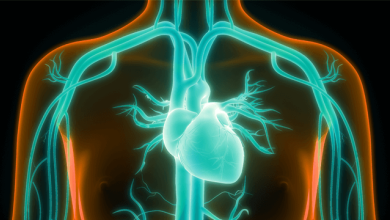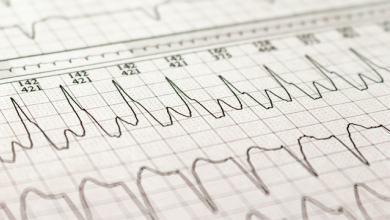Search results
Wide Complex Tachycardia
Author(s):
John B Garner
,
John M Miller
Added:
3 years ago
Article
Author(s):
Moinuddin Choudhury
,
Mark R Boyett
,
Gwilym M Morris
Added:
3 years ago
The sinoatrial or sinus node (SAN) is the heart’s natural pacemaker. Located in the superior right atrium, it automatically produces cyclical electrical activity to initiate each heartbeat in normal sinus rhythm. SAN dysfunction (SND) in humans, also known as ‘sick sinus syndrome’, can manifest as pathological bradycardia and asystolic pauses. As a result, SND can lead to symptoms of reduced…
View more
Author(s):
Philippe Charron
,
Eloisa Arbustini
,
Gisèle Bonne
Added:
3 years ago
Most mutations of the LMNA gene affect the heart, causing a dilated cardiomyopathy, ususally with conduction defect and ventricular arrhythmia, with or without skeletal muscle involvement. Although a relatively rare disease, cardiologists should be aware of laminopathies (diseases caused by LMNA gene mutations) because of the particularly aggressive course compared with most other…
View more
Author(s):
Tom Nelson
,
Pankaj Garg
,
Richard H Clayton
,
et al
Added:
3 years ago
Ventricular tachycardia (VT) and VF occur mainly in people with impaired cardiac function and/or ischaemic heart disease, and account for the majority of sudden cardiac deaths worldwide.1 Treatment with anti-arrhythmic drugs such as amiodarone may be at best neutral in terms of mortality and carries significant long-term risks.2,3 While ICDs significantly improve survival for patients with…
View more
Atrial Myopathy Underlying AF
Author(s):
Harold Rivner
,
Raul D Mitrani
,
Jeffrey J Goldberger
Added:
3 years ago
Article
Added:
6 years ago
Author(s):
Christian Mahnkopf
,
Younghoon Kwon
,
Nazem Akoum
Added:
2 years ago
Author(s):
Amaar Hassan
,
Gregory YH Lip
,
Laurent Fauchier
,
et al
Added:
3 years ago
Author(s):
Emma Svennberg
,
Added:
2 years ago
In this video from Arrhythmia Academy's Journal Club, Dr David Duncker (Hannover Heart Rhythm Center, Hannover, Germany) and Dr Emma Svennberg (Karolinska University Hospital, Karolinska Institute, Stockholm, Sweden) sit down to discuss screening options for atrial fibrillation.
Dr Svennberg presents the results from the STROKESTOP study, which then leads into a discussion in regards to the…
View more
















 « First
« First